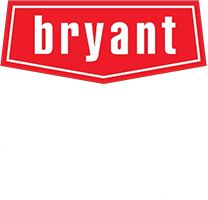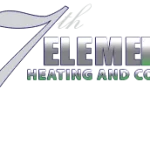Creating a Healthier, More Efficient Home Comfort System
Your home is your sanctuary, a place of comfort and safety for your family. A crucial component of that comfort is your heating, ventilation, and air conditioning (HVAC) system, working tirelessly behind the scenes to maintain the perfect indoor environment. But like any major appliance, your HVAC system has a finite lifespan. Knowing when to repair versus when to invest in a full system replacement is key to not only ensuring consistent comfort but also managing energy costs and protecting your home’s long-term value. For homeowners in Meridian and the surrounding Boise area, making this decision at the right time can prevent unexpected breakdowns during temperature extremes and lead to significant savings and improved indoor air quality.
Key Signs Your HVAC System Is Nearing the End
It’s easy to forget about your HVAC unit until it stops working. However, your system often sends subtle—and not-so-subtle—clues that it’s time for a change. Paying attention to these signs can help you plan for a replacement before a catastrophic failure forces your hand.
1. Your System’s Age
The most straightforward indicator is age. Most furnaces have a lifespan of 15-20 years, while central air conditioners typically last 10-15 years. If your system is within or beyond this range, it’s operating on borrowed time. Even if it seems to be working, its efficiency is likely far below that of modern units.
2. Rising Energy Bills
Have your heating and cooling costs been creeping up year after year, even though your usage habits haven’t changed? As HVAC systems age, they lose efficiency and have to work harder to heat or cool your home, leading to a noticeable increase in your utility bills. A new, high-efficiency system can often pay for itself over time through energy savings.
3. Frequent and Costly Repairs
An occasional repair is normal, but if you’re calling for HVAC repairs multiple times a year, it’s a clear red flag. A good rule of thumb is the 50% rule: if the cost of a repair is close to half the value of a new system, replacement is the more financially sound option in the long run.
4. Inconsistent Temperatures and Poor Comfort
Are some rooms in your house too hot while others are too cold? This could be a sign that your HVAC system is no longer able to distribute air effectively. It may be struggling to meet your home’s demands, leading to uneven comfort. Modern solutions, like an HVAC zone system, can provide a significant upgrade in customized comfort.
5. Excessive Dust or Poor Indoor Air Quality
Older HVAC systems can contribute to poor indoor air quality. If you notice an increase in dust, allergens, or humidity issues, your system may be failing to filter the air properly. For families prioritizing a healthy living environment, this is a major concern. Upgrading can involve solutions like a whole-house humidifier to create a more balanced and comfortable atmosphere.
The Benefits of Upgrading Your HVAC System
Moving forward with an HVAC replacement is a significant investment, but it comes with substantial rewards. It’s not just about getting a new machine; it’s about upgrading your family’s quality of life and your home’s overall performance. A new furnace installation or air conditioner replacement offers more than just reliable temperature control.
- Enhanced Energy Efficiency: New systems, especially ENERGY STAR® rated models, can be dramatically more efficient, potentially lowering your heating and cooling costs by 20% or more.
- Improved Home Comfort: Advanced technology provides more consistent heating and cooling, variable-speed motors offer quieter operation, and smart thermostats allow for precise control.
- Better Indoor Air Quality: Modern systems have superior filtration and humidity control options, reducing allergens, dust, and mold for a healthier breathing environment.
- Increased Home Value: A new, high-efficiency HVAC system is a major selling point for potential buyers, demonstrating that the home has been well-maintained.
- Peace of Mind: A new system comes with a manufacturer’s warranty and the reliability you need to get through Idaho’s hot summers and cold winters without worry. Regular upkeep with an HVAC maintenance plan can extend this peace of mind for years.
Did You Know?
According to the U.S. Department of Energy, heating and cooling account for about 48% of the energy use in a typical U.S. home. Upgrading to a high-efficiency system is one of the most effective ways to reduce your carbon footprint and monthly expenses.
Comparing Old vs. New HVAC Technology
| Feature | Older Systems (15+ Years) | Modern High-Efficiency Systems |
|---|---|---|
| Efficiency (SEER) | Often 10 SEER or lower | 16 SEER up to 25+ SEER |
| Operation | Single-stage (on/off), often loud | Variable-speed for quiet, consistent operation |
| Air Filtration | Basic, less effective filters | Advanced media filters, UV lights, and air purifiers |
| Thermostat | Manual or basic programmable | Smart thermostats with Wi-Fi and learning capabilities |
Your Local HVAC Partner in Meridian and Boise
Choosing the right HVAC system for your home depends on various factors, including the Treasure Valley’s distinct four-season climate. From hot, dry summers to cold, snowy winters, your system needs to be robust and versatile. As a local company serving Meridian, Boise, Nampa, Eagle, and beyond, 7th Element Heating and Cooling understands these unique demands. We can help you explore options like high-efficiency heat pumps that provide both heating and cooling in one unit, or powerful gas furnaces paired with efficient ACs. Our focus is on providing honest guidance and expert HVAC installation services tailored to your family’s needs and budget.
Ready to Explore Your Options?
If you’re noticing the signs, don’t wait for a breakdown. Let our team provide a comprehensive assessment and a no-pressure estimate for your HVAC system replacement.
Frequently Asked Questions
How long does an HVAC replacement take?
A standard HVAC system replacement, including both the furnace and air conditioner, can typically be completed in one to two days. The exact timeline depends on the complexity of the installation and any necessary ductwork modifications.
What is a SEER rating?
SEER stands for Seasonal Energy Efficiency Ratio. It measures the cooling efficiency of an air conditioner or heat pump. The higher the SEER rating, the more energy-efficient the unit is, meaning it uses less electricity to cool your home.
Will I need to replace my ductwork too?
Not always. During our initial assessment, we will inspect your ductwork for leaks, proper sizing, and overall condition. If it’s in good shape, it can often be used with the new system. If it’s old, leaky, or improperly sized, we may recommend repairs or replacement to ensure your new system operates at peak efficiency.
Do you offer financing options?
Yes, we understand that an HVAC replacement is a significant investment. We offer flexible financing options to help homeowners manage the cost and get the new, reliable system they need without straining their budget.
Glossary of Terms
- Heat Pump: An all-in-one system that provides both heating in the winter and cooling in the summer by moving heat, rather than creating it through combustion.
- AFUE (Annual Fuel Utilization Efficiency): A percentage rating that measures a furnace’s heating efficiency. A higher AFUE means greater efficiency.
- Zoned HVAC System: A system that uses dampers in the ductwork to control the temperature in specific areas (zones) of a home independently, improving comfort and efficiency.
- Ductless Mini-Split: A type of heating and cooling system that doesn’t require ductwork. It consists of an outdoor compressor unit and one or more indoor air-handling units, perfect for additions or homes without existing ducts.

